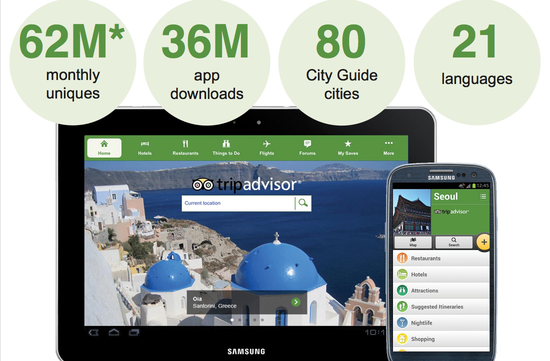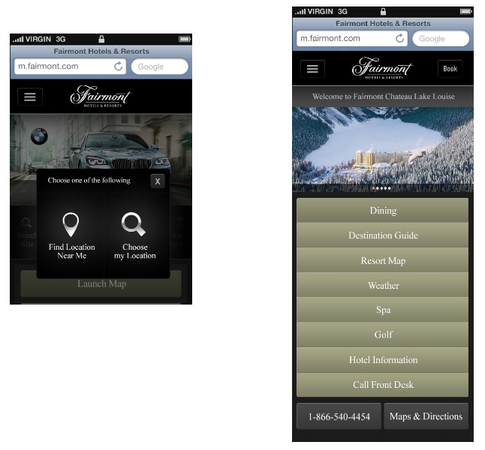Five strategic tips for mobile from top travel brands
The case for mobile is no longer a debatable one. Whether you are a legacy player or innovative start-up, all travel brands should be embracing mobile but how you do that depends on your business, writes Pamela Whitby.
Not all travel brands are equal. So as with everything how firms tackle mobile will depend on their size, objectives, budget, customer and so on. That said, all travel brands today have recognised that mobile is absolutely integral to their success.
Brands that were early embracers of mobile also recognise that they need to keep adapting to rapidly changing consumer behaviour. And as EyeforTravel’s recent in depth Travel Consumer Report reveals, consumer behaviour varies widely from country-to-country. So as brands get closer to understanding our mobile world, EyeforTravel.com outlines some top tips from some key speakers at this year Travel Distribution Summit, Europe, which took place in London on May 23-24.
1. Don’t underestimate what your customer wants or needs: do the research and deliver
Before taking your mobile strategy a step further, mobile travel brands must know how their customers are using mobile – and that will vary from company to company.
Today TripAdvisor has 60 million unique monthly visits via mobile and 36 million people have downloaded the app. What TripAdvisor knows, says Nathan Clapton VP Mobile at TripAdvisor, is that 94% of its customers are using mobile to research local things to do to, 75% are checking for restaurants and 80% are trying to find directions. What annoys 58% of UK travellers, most is high roaming charges. With this knowledge to hand, TripAdvisor has been able to start shifting its strategy to meet its customer needs. One example of this is that TripAdvisor now has 80 city guides in 21 languages which, once downloaded can be viewed offline.

For a hotel company like Fairmont Raffles International, which has seen mobile usage grow 275% in the past two years, mobile site visitors tend to be more task-oriented. “They want to achieve something quickly and easily so it is important for us to prioritise navigation based on key tasks (such as finding a hotel, making reservation, retrieving a reservation and so on),” says Michael Innocentin, Director of Internet Marketing at Fairmont Raffles Hotels International. For Fairmont, the trick is to pay close attention to the design and usability of the mobile site in the early stages and only once this is perfected should you go to developers.
The customers of a flight search engine, on the other hand, may different requirements. According to Ivan Kozlov Product Manager Mobile Platforms and Applications, JetRadar, they recognised that their mobile solution should solve a problem and the process of doing so should be clear and easy. “The app’s interface should first and foremost meet the user expectations,” he stresses.
2. Don’t write off mobile apps if you have a loyal base
Again, whether you decide to go for a mobile app, mobile web, or both, depends on the evolving needs of the particular business. Take TripAdvisor, for example, which has long extolled the advantages of the mobile web. However, now has a user base of 200 million and mobile apps are becoming increasingly important. In the past year there has been 116% growth in the usage of mobile travel apps, says Clapton, a statistic TripAdvisor can no longer ignore. According Clapton the mobile web drives users to discover but apps an increase usage and drive revenues. “Apps offer a faster, better user experience, encourage repeat visits and brand loyalty, and can drive conversions,” he says.
Fairmont’s Innocentin agrees. “More people use the mobile site, but on the app they spend longer and convert more,” he says. In other words app users are highly engaged but there are lower numbers of users. “With our app we wanted to create a more engaging and convenient experience for our loyal guests,” he says.

It goes without saying that small hotels should have a great mobile search engine, but says Clapton, if users are coming to your mobile website more than five times a year then you should consider a mobile app.
3. Distinguish between tablets and mobile
Google may lump mobile phones and tablets together but many travel brands are increasingly distinguishing between their mobile and tablet strategy. Fairmont’s Innocentin, for example, says its users approach the tablet in a similar way to desktop users. For this reason, Fairmont.com was designed to support tablets; this means that all rich media - photos, videos, virtual tours and maps - are touch enabled. This is also why Fairmont decided to go for a ‘parallel mobile strategy’, rather than dynamic page serving (the least popular approach) or a responsive design (which allows websites to adapt to the device being used). Around 70% of firms build their sites using the ‘parallel mobile strategy’ because this, says Innocentin, this has the lowest barrier to entry but the highest degree of flexibility.
TripAdvisor too, which is seeing 15% of revenues coming from tablets, is clear that “the tablet is the new desktop”. For this reason Clapton advocates a native approach to tablets. “We are seeing more people coming to tablets and they have a different demographic and usage patterns,” he says.
Ritz-Carlton is another big name that is taking a different approach to tablets. According to Christoph Heyn, Senior Manager, Global e-Commerce & Mobile Strategy at The Ritz Carlton Hotel Company they are definitely seeing a higher spend and conversion on tablets than on mobile; in fact the majority of smartphone bookings are still last-minute.
4. Maximise and organise your content and simplify processes
Once you have established how customer is going to use your app, then it is time to start looking at how best to present it. When TripAdvisor first developed for mobile they initially went for a smaller version of the bigger screen. “We realised that on mobile we needed bigger pictures, tappable spaces, clearly presented information,” admits Clapton. As a result, TripAdvisor has recently made its mobile user interface more engaging and user friendly. The information is presented in a much simpler and easy to read way, and where previously the page was full of text, now there is an enticing image to boot. With its city guides, it has developed a point-me-there compass, fast offline maps and curated city tours.
Clapton stresses that firms need to go that bit further to provide breadth and depth of information. “Users aren’t just looking for a restaurant. They want to see reviews, menus and even photographs or recommendations of what is on the menu,” he says. As TripAdvisor receives more reviews of a restaurant they are adding menus, the ability to reserve, contact details and so on. Another area that TripAdvisor is exploring is the power of games.
One way Fairmont is maximising mobile usage is by being contextually relevant with local language. It used translations.com to create mobile pages in seven languages including English, German, Japanese, Arabic and Chinese. According to Dan O’Sullivan VP International Sales at translations.com, mobile sites are content light so it is fairly straightforward and cost efficient to get them into several languages.
On a more practical level, Arianna Tregon, Web & Mobile Manager at Vueling suggests that brands encourage passwords usage so that payment information can be stored to make the payment interface simpler for returning customers.
5. Optimise your marketing tactics for mobile
It is all very well developing for mobile but brands must go further than that. According to Innocentin, search campaigns must be optimised for mobile too – think click-to-call tracking, appropriate display advertising, emails and landing pages.
As Heyn, points out, hotels can go much further in marketing to customers while they are on the property as there is strong interest in using mobile while onsite. However, his advice is don’t overcomplicate things, don’t over promise and don’t be creepy. Simple live real-time, relevant offers are possible today and the take up rates of these are huge.

